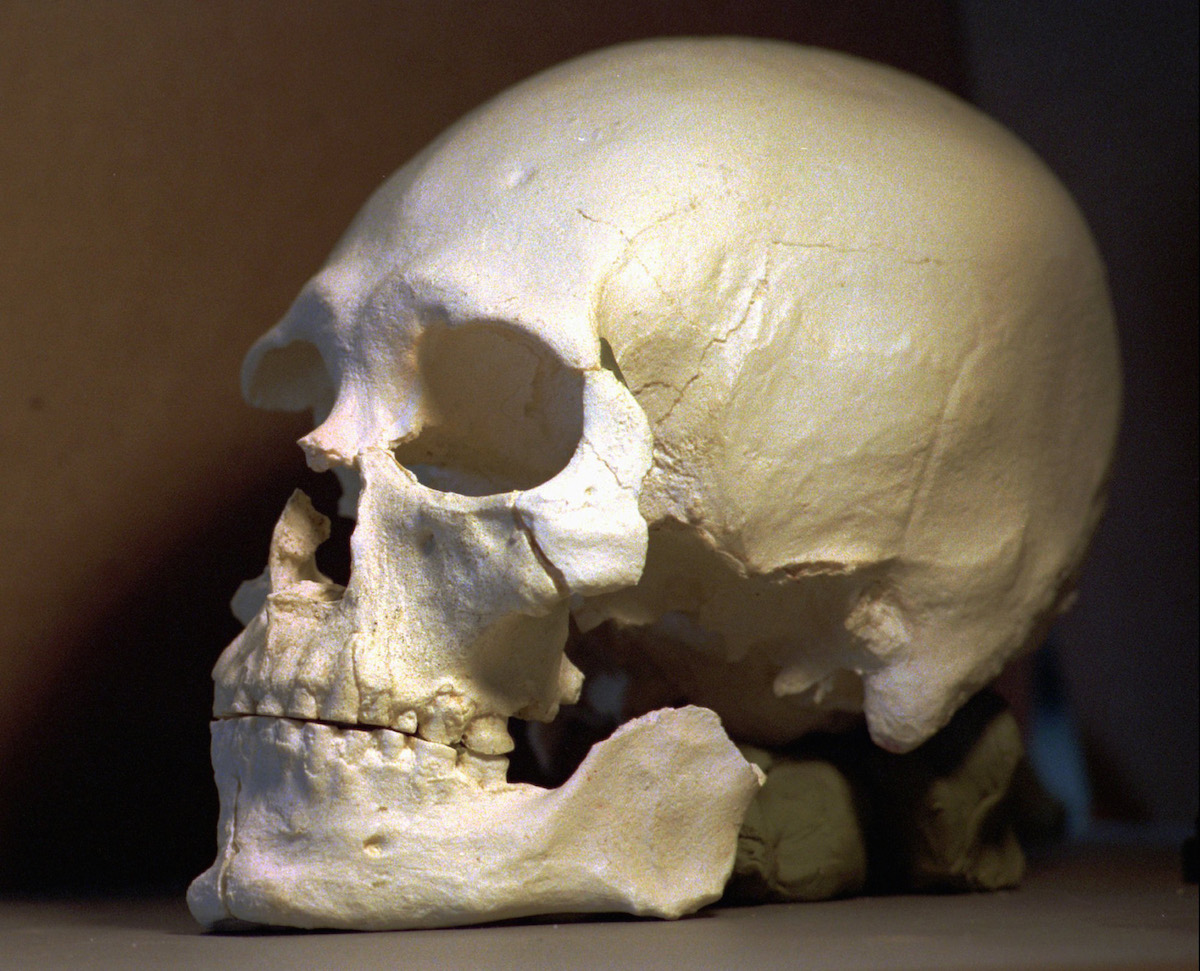
A legal saga involving five Native American tribes and a group of scientists—which may now be drawing to a close—began on July 28, 1996. On that day, exactly 20 years ago, their differences of perspective were thrown into dramatic relief with the discovery of a skull on the bottom of the Columbia River near Kennewick, Wash.
The two college students who found the skull thought it must have belonged to a murder victim. They hid it in some bushes and contacted the police. The coroner called in a forensic anthropologist, Jim Chatters, and the two returned to the site where the skull was found, where they unearthed a nearly complete skeleton. Chatters initially guessed that the bones were likely from a Caucasian male who had been dead for decades at least. But there were some discrepancies. An object embedded in the pelvis gave Chatters pause. It didn’t show up on an x-ray, so it wasn’t metal. A CAT scan showed it was a spear point that resembled ones used thousands of years ago—odd for a skeleton he had thought was probably a 19th-century settler.
A piece of a finger bone sent to the University of California at Riverside revealed even more of a surprise: it was radiocarbon dated as over 9,000 years old, which meant that the remains were among the oldest and most complete ever found in North America. (According to the Burke Museum, which has housed the bones since 1998, subsequent research indicates the bones are actually more likely a couple hundred years younger than that).
The skeleton became known among many as Kennewick Man—or, to local tribes, the Ancient One.
Get your history fix in one place: sign up for the weekly TIME History newsletter
The remains were found on Army Corps of Engineers land, and the Corps was prepared to promptly comply with local tribes’ wishes to take control of the Ancient One. As TIME reported in Oct. 1996: “Unless a judge intervenes, the bones will be turned over to the local Umatilla Indian tribe by the end of the month for immediate burial. Says Umatilla spokesman Armand Minthorn: ‘Our tradition says once a body goes into the ground that’s where it stays.'”
But, though a judge didn’t intervene, scientists did, desperate to preserve the chance to study the bones. The legal battle for the bones wound its way through the court system for years, until in 2004 the 9th Circuit Court upheld a decision in favor of the scientists, deciding that there was not enough contextual evidence to indicate the cultural affiliation required by the 1990 federal law that would have given the remains to the tribe, The Native American Graves Protection and Repatriation Act (NAGPRA).
In 2006 TIME reported on the discoveries those scientists made from just a 10-day session with the bones, from the likelihood that his burial was deliberate to the estimate that he may have died as young as 38. His bones revealed habitual postures and motions suggesting he waded in shallow rapids and made his own spearpoints, per the Smithsonian Magazine.
Then, last year another scientific discovery changed the story. DNA analysis found that the current population most closely related to Kennewick Man were, in fact, Native Americans, including one of the tribes seeking to reinter his remains.
The Army Corps of Engineers verified those findings in April 2016 and determined that the result meant the NAGPRA applied to Kennewick Man’s bones. Now, as they determine priority of custody, the Corps is seeking to determine a cultural affiliation to a current tribe, based on geographical, kinship, biological, archaeological, anthropology, linguistic, folklore, oral tradition and historical evidence. If a preponderance of evidence indicates a “relationship of shared group identity which can be reasonably traced” between a current tribe and some group to which Kennewick Man belonged, then the remains can be turned over to a tribe. The five tribes plan to work together to rebury the bones, reported the Seattle Times.
But, in the event that such a preponderance of evidence does not reasonably trace this connection, the bones will be considered “unclaimed”—and their saga will continue.
More Must-Reads from TIME
- Cybersecurity Experts Are Sounding the Alarm on DOGE
- Meet the 2025 Women of the Year
- The Harsh Truth About Disability Inclusion
- Why Do More Young Adults Have Cancer?
- Colman Domingo Leads With Radical Love
- How to Get Better at Doing Things Alone
- Michelle Zauner Stares Down the Darkness
Contact us at letters@time.com